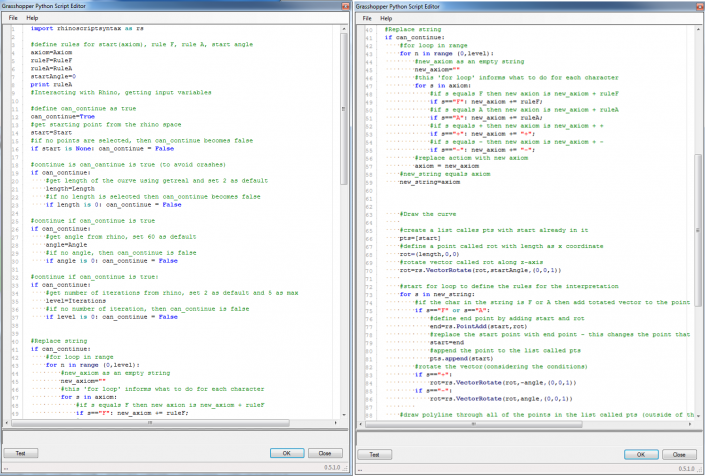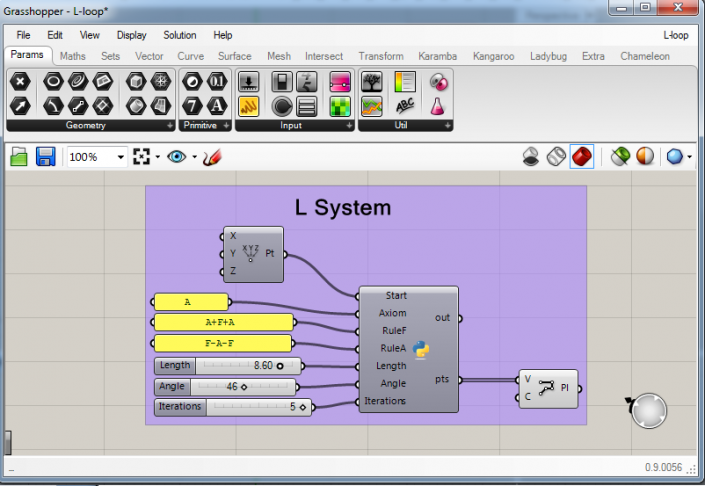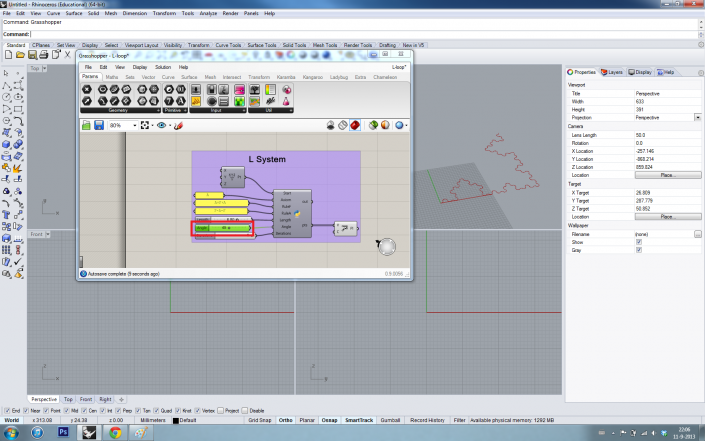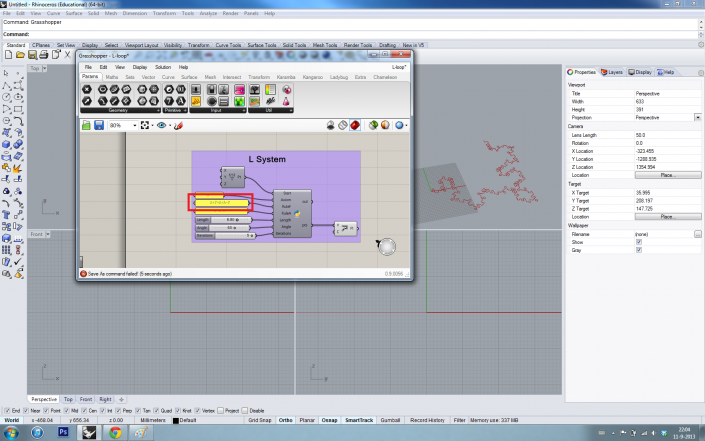Difference between revisions of "workshop01G1:Objectives"
(→L-System) |
(→L-System) |
||
| Line 21: | Line 21: | ||
==L-System== | ==L-System== | ||
| − | The L-System, also known as the Lindenmayer System, is ... | + | The L-System, also known as the Lindenmayer System, is created in 1968 by the Hungarian theoretical biologist and botanist A. Lindenmayer. The L-system can be used to describe the behavior of plant cells and to model the growth process of plants. |
| + | |||
| + | How does it work: | ||
| + | A plant starts with an axiom and the growth is described by some rules. For example: | ||
| + | Axiom = A | ||
| + | RuleA = A+B-A | ||
| + | RuleB = B-A | ||
| + | |||
| + | Rule A means that every A will be turned in A+B-A; while rule B means that every B will be turned into B-A. Since the Axiom (starting point) is A, This will be turned into A+B-A. In the next iteration every A will be turned into A+B-A again, while the B will be turned into B-A. So for the second iteration we get: | ||
| + | |||
| + | A (Axiom) | ||
| + | A+B-A (1st iteration) | ||
| + | A+B-A+B-A-A+B-A (2nd iteration) | ||
[[File:GH Python Screenshots.png|705px]] | [[File:GH Python Screenshots.png|705px]] | ||
Revision as of 18:31, 12 September 2013
Title
Lorem ipsum dolor sit amet, consectetur adipiscing elit. Ut ac lobortis nibh. Sed et lectus et dolor convallis sagittis id a sem. Nulla interdum nunc et urna hendrerit at pellentesque risus convallis. Proin a turpis nunc, eu tincidunt arcu. Etiam magna turpis, facilisis id placerat et, congue eu nisi. Vivamus euismod nulla id elit laoreet placerat eu eu nisi. Morbi id libero quam, nec rhoncus diam.
L-System
The L-System, also known as the Lindenmayer System, is created in 1968 by the Hungarian theoretical biologist and botanist A. Lindenmayer. The L-system can be used to describe the behavior of plant cells and to model the growth process of plants.
How does it work: A plant starts with an axiom and the growth is described by some rules. For example: Axiom = A RuleA = A+B-A RuleB = B-A
Rule A means that every A will be turned in A+B-A; while rule B means that every B will be turned into B-A. Since the Axiom (starting point) is A, This will be turned into A+B-A. In the next iteration every A will be turned into A+B-A again, while the B will be turned into B-A. So for the second iteration we get:
A (Axiom) A+B-A (1st iteration) A+B-A+B-A-A+B-A (2nd iteration)
test
test
test
test




